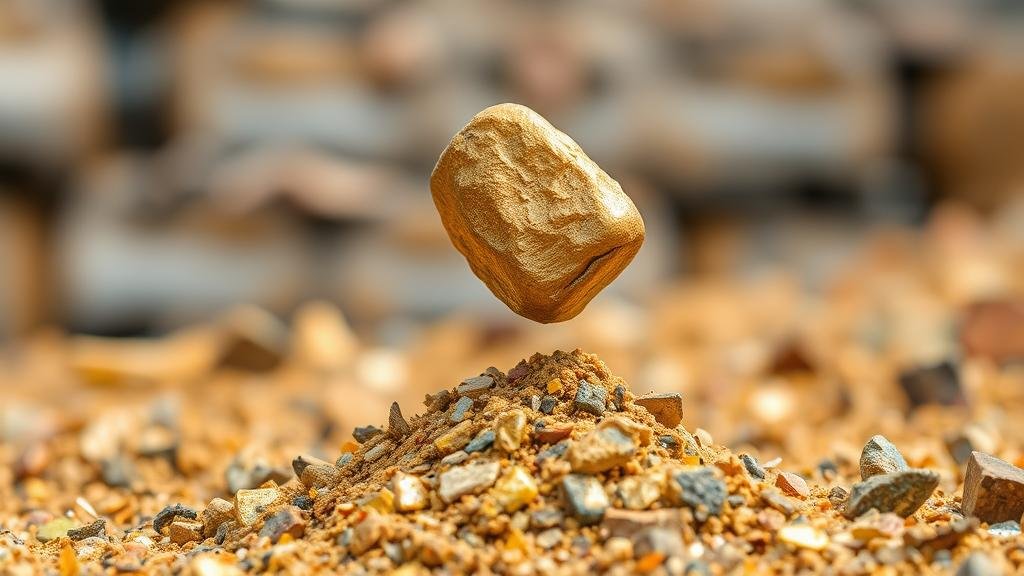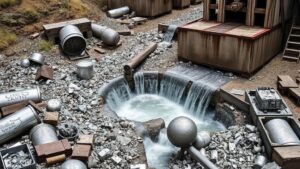Techniques for Recovering Gold in Areas with High Organic Debris
Techniques for Recovering Gold in Areas with High Organic Debris
Gold panning and mining in regions with high organic debris can present significant challenges. Organic materials such as leaves, twigs, and other plant matter can interfere with traditional gold recovery methods. But, several techniques have been developed to effectively recover gold in these environments. This article outlines these techniques, providing case studies and real-world applications to convey their effectiveness.
Understanding the Challenge
High organic debris can obstruct access to gold deposits buried within sediment. Not only can this interfere with retrieval equipment, but it can also lead to contamination of the gold recovery process. For example, organic matter can create buoyant polluting particles that may cause finer gold grains to be lost or redistributed during extraction. Understanding the specific conditions of each site, including water flow and debris composition, is crucial for successful gold recovery.
Techniques for Gold Recovery
Here are some of the most effective techniques used in recovering gold from areas with high organic debris:
- Using a Gold Sluice Box: The sluice box is a common tool that enhances placer gold recovery. When designed with specific features to accommodate organic debris, it can effectively separate gold from interfering materials by utilizing water flow. For example, integrating riffles or expanding the sluice design can help trap gold while allowing organic matter to wash over.
- Magnetic Separation: In some cases, organic materials may be mixed with magnetic minerals. By utilizing magnets, miners can attract these materials and remove them efficiently. This is particularly effective when the gold is mixed with iron or hematite particles.
- Hand Panning with Modified Techniques: For smaller areas where organic debris is prevalent, hand panning can still be effective, especially when employing modified techniques. This may involve using finer mesh screens to temporarily isolate organic material before panning, thereby enhancing the likelihood of gold recovery.
- Water Jetting and Hydraulic Methods: Utilizing high-pressure water jets can help dislodge organic debris, allowing for clearer access to gold deposits below. e hydraulic methods can effectively move debris without significantly disturbing the gold.
- Ecological Methods: In certain environments, employing biological removal strategies, such as encouraging the growth of specific plants that absorb excess organic materials, may assist in reducing debris in a sustainable manner.
Case Studies
Several mining operations have successfully adopted these techniques, demonstrating their practical application. For example, a mining team in Northern California faced heavy organic debris that hampered traditional sluicing methods. By modifying their sluice box design to include adjustable riffles and utilizing a combination of water jetting, they effectively increased their gold recovery rates by more than 40% within a single season.
Another example can be found in the gold-rich rivers of British Columbia. Miners using magnetic separation techniques reported significant success in removing unwanted minerals that were intertwined with concentrated gold deposits. By coupling these methods with careful hand panning, they achieved higher purity in the extracted gold while maintaining an eco-friendly approach.
Statistical Insights
According to the U.S. Geological Survey, about 2% of gold extraction in various regions is compromised due to organic debris, suggesting that improving extraction techniques could lead to increased yield. By adopting methods tailored to specific challenges posed by organic matter, extraction efficiency can dramatically increase.
Conclusion and Actionable Takeaways
Recovering gold in areas with high organic debris requires thoughtful application of specialized techniques. To enhance recovery efforts, miners should consider the following actionable takeaways:
- Adapt sluice box designs to improve efficiency and facilitate the removal of organic materials.
- Incorporate magnetic separation techniques when appropriate for mixed material environments.
- Use high-pressure water jetting to clear debris while preserving the locations ecology.
- Experiment with hand panning techniques that reduce contamination from organic debris.
By understanding and implementing these strategies, gold miners can improve their recovery rates and minimize the impact of organic debris on their operations.



